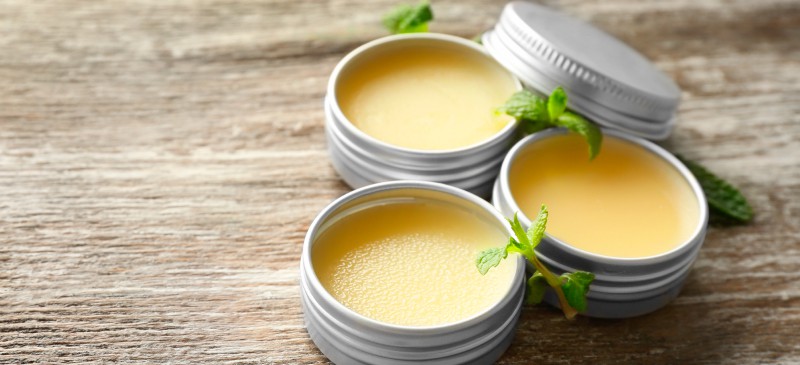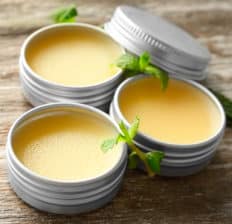This Dr. Axe content is medically reviewed or fact checked to ensure factually accurate information.
With strict editorial sourcing guidelines, we only link to academic research institutions, reputable media sites and, when research is available, medically peer-reviewed studies. Note that the numbers in parentheses (1, 2, etc.) are clickable links to these studies.
The information in our articles is NOT intended to replace a one-on-one relationship with a qualified health care professional and is not intended as medical advice.
This article is based on scientific evidence, written by experts and fact checked by our trained editorial staff. Note that the numbers in parentheses (1, 2, etc.) are clickable links to medically peer-reviewed studies.
Our team includes licensed nutritionists and dietitians, certified health education specialists, as well as certified strength and conditioning specialists, personal trainers and corrective exercise specialists. Our team aims to be not only thorough with its research, but also objective and unbiased.
The information in our articles is NOT intended to replace a one-on-one relationship with a qualified health care professional and is not intended as medical advice.
DIY Lip Balm with 5 Healing Ingredients
January 7, 2021

The average store-bought lip balm may moisturize your lips for a little while but often doesn’t last and often includes artificial, even toxic ingredients. In contrast, this DIY lip balm recipe provides nourishment and hydration for dry, cracked lips without the negative side effects.
Key Ingredients
- Coconut oil: Why does coconut oil work so well for skin and lips? It’s because of the saturated fats that helps the skin stay moisturized, as the fat prevents moisture loss through the skin’s pores. These fats give the skin a healthy, smooth and even tone.
- Beeswax: This amazing natural substance has the ability to protect and repair rough, dry or chapped skin because beeswax locks in moisture.
- Shea butter: One of the better moisturizers, shea butter penetrates deep into the skin, offering more moisturizing benefits while preventing windburn. It’s perfect for cracked lips and while the SPF of this sunscreen is only about 6, it can provide some sun protection in a more natural way and is perfect underneath makeup.
- Peppermint essential oil: Did you know that peppermint oil has calming, softening, toning and anti-inflammatory effects on the skin when it’s used topically? It also has antiseptic and antimicrobial properties.
- Lavender essential oil: Using lavender oil topically can help improve a number of skin conditions, from canker sores to allergic reactions, acne and age spots. Research indicates that its anti-inflammatory and antioxidant properties help ease skin conditions and reverse signs of aging.
How to Make DIY Lip Balm
Making your own lip balm is surprisingly easy. In a small pot over medium-low heat, melt the beeswax, coconut oil and shea butter.
Remove from heat and add the lavender and peppermint oils. Whisk well to distribute oil throughout the mixture.
Immediately pour into lip balm containers or chapstick tubes (which ideally are made of metal or thick glass rather than plastic). Let cool on the counter until hard.
Print
DIY Lip Balm Recipe
- Total Time: 20 min
- Yield: 5 lip balms 1x
Description
Rather than putting toxic chemicals onto your skin and mouth, try this homemade lip balm recipe with five perfect ingredients.
Ingredients
- 1 tablespoon beeswax
- 1 tablespoon coconut oil
- 2 tablespoons shea butter
- 7 drops lavender essential oil
- 7 drops peppermint essential oil
- lip balm containers or chapstick tubes (ideally made from metal or thick glass)
Instructions
- In a small pot over medium low heat melt beeswax, coconut oil and shea butter.
- Remove from heat and add lavender and peppermint oils. Whisk well to distribute oil throughout the mixture.
- Pour quickly into lip balm containers or chapstick tubes. Let cool on counter till hard.
- Prep Time: 3 min
- Cook Time: 3 min
Comments
Please keep comments under 200 characters.





https://www.youtube.com/channel/UCyt2dGrKTf9KpBk1jdUl3oA
This lipbalm works wonders on dry chapped lips! The doTerra Peppermint plumps the lips and the lavender soothes the lips 💋 perfectly.
Thank you very mucj
What is the shelf life for this recipe?
The only containers I can find are aluminum that are metal
I live in the US and found 2oz amber glass containers on Amazon and Uline’s websites.
Would this help heal the lip lickers dermatitis that a 6 year old girl causes to be so bad her skins red and chapped clear to the bottom of her chin an just a hair shy below her nose? We heal her face just to be bad a week later. We can’t get her to stop licking for about 9 months now and she screams it burns or eats it off her face or wipes it off when we apply chapstick or vasaline or prescription ointment
I’d try vitamin e oil. It’s got amazing healing properties. I’d stay away from vaseline as it’s a petroleum distillate. Vitamin e oil is amazing for healing, and it will not burn her skin. You might consider getting vitamin e gel caps, and opening one when you want to apply it. The best would be one that contains all the types of vitamin e. There are 8 types, total: alpha-, beta-, gamma-, and delta-tocopherol and alpha-, beta-, gamma-, and delta-tocotrienol. You want to avoid vitamin e beginning with “DL” which is the synthetic form.
As for the licking, you might consider checking out some of Andrew Saul’s information on niacin.
Thank you for this information. I will teach my grandchildren the beauty of what God has given us on earth to enjoy and use in healing.
I use all those basic ingredients except use citrus oils and cottonwood early spring buds foraged and infused in the olive oil (Balm of Gilead). Smells WONDERFUL!
AND heals sunburn overnight.
Lips feel luxurious with this.
Would not be without it!
The cottonwood bud has the healing power of the Pinyon pine out west and its equivalent of the middle eastern tree buds (Balm of Gilead) used for millenia 🙏
If you use only lavender oil do you double it to 14 drops or just use the 7 drops?
Hi Martha … double to 14.
I’m confused about something: peppermint has menthol in it. Isn’t menthol an alcohol that will dry skin out? If so, why is it always used in lip balm?
When mixed with the other ingredients, it shouldn’t be an issue
Yes it will. I stopped using it!
Do you have any tips on how to make shaving or cutting up the beeswax any easier? I found myself looking like a madwoman trying to stab the block of beeswax to break off small enough pieces to measure. Shaving or grating it was near impossible, not to mention the huge mess it created! Thanks.
I melted mine first
brambleberry.com and bulkapthecary.com are excellent sources for all the products in this recipe. I love making my own lip balms & I always use their supplies. Just a tip to keep your pans clean….I prefer to use a double boiler method when melting my ingredients. I use mason jars because they’re designed to withstand high temperatures and I sit it inside a small saucepan with water. A pyrex container also works well. The spout is handy for pouring into tubes and I like to sit the handle outside the edge of my saucepan when I melting the ingredients.
To clean the jar, I wipe out as much as I can with a paper towel, then wash with dawn. It works pretty well for me.
Whats the shelf life for this recipe
can I use cocoa butter instead of Shea? I have a lot of cocoa butter on hand that I need to use up. I suppose it might alter the smell a little bit though.
It should work but I haven’t tried it personally. Let us know how it turns out!
Why do you use chopsticks?
It’s easier to clean (or just throw away!)
Can I use avocado oil instead of the Shea butter or will it leave the lip balm too runny?
It will probably be a little to runny but you could play around with the ratios and probably still use it
Just increase the beeswax a little
Does the essential oil have to be edible or can one us the aromatherapy oils for lip balms?
I think it is very important to use the highest quality of oils because they will be absorbed into the body and ingested through the mouth in small amounts
I have developed an intolerance to coconut products (resulting in an extremely itchy contact dermititus rash) and am so bummed b/c I make a lot of natural products using it, not to mention I can’t continue with my daily oil pulling. Is there a good substitute to use in place of coco oil?
For oil pulling, you can also use olive oil
If using tins for this recipe ( let’s say the 1/2 oz tins), how many tins would this recipe yield? Thanks!
This turned out so nice! So smooth and feels great. My question is, what is the best way to clean out the pan I used to melt everything in?
I used hot water and soap but I did have to scrub!
Thank you! I got it clean by heating soapy water and giving it a good scrub. :)
You can buy organic beeswax pellets on amazon. Also i put the ingredients in a heavy glass measuring cup & set it in a pan of water, let it come to a simmer, ez peezy. i also add a 1/4 teaspoon of honey, when does honey go bad? NEVER! GOD is Truly Amazing!!! ☝🏼
Check out our other DIY recipes for other ways to use shea butter. Many of the recipes call for it, especially the body butters and lotions!